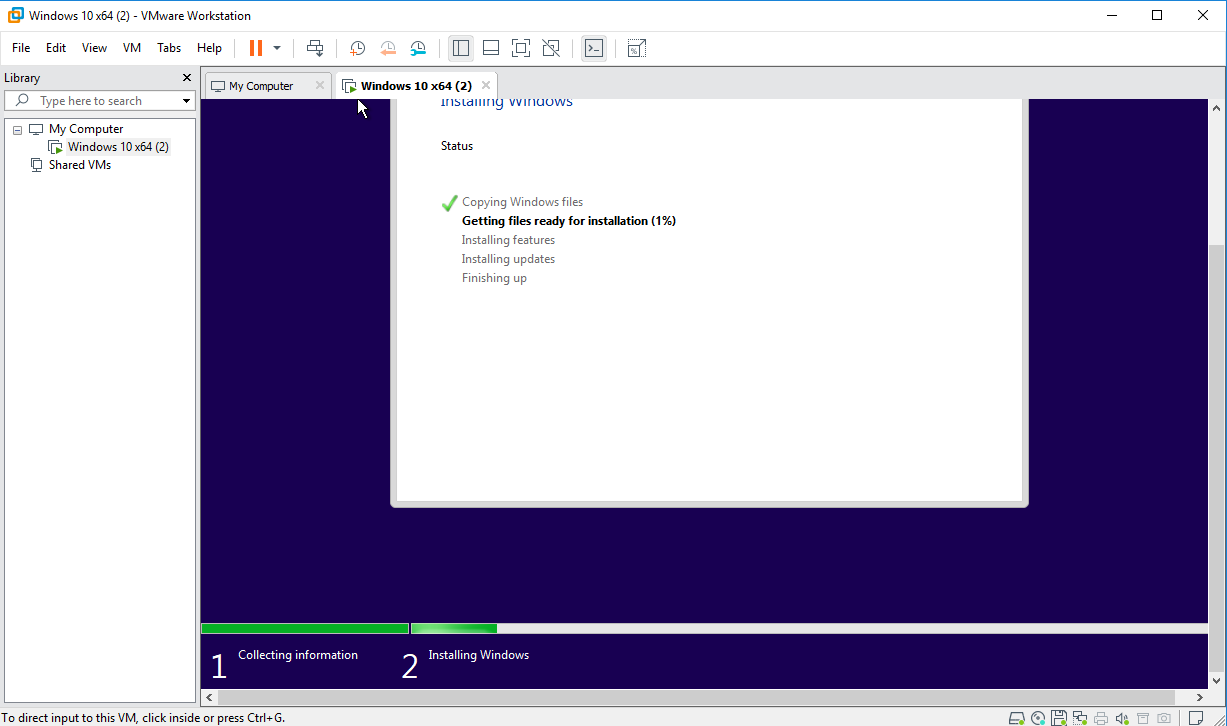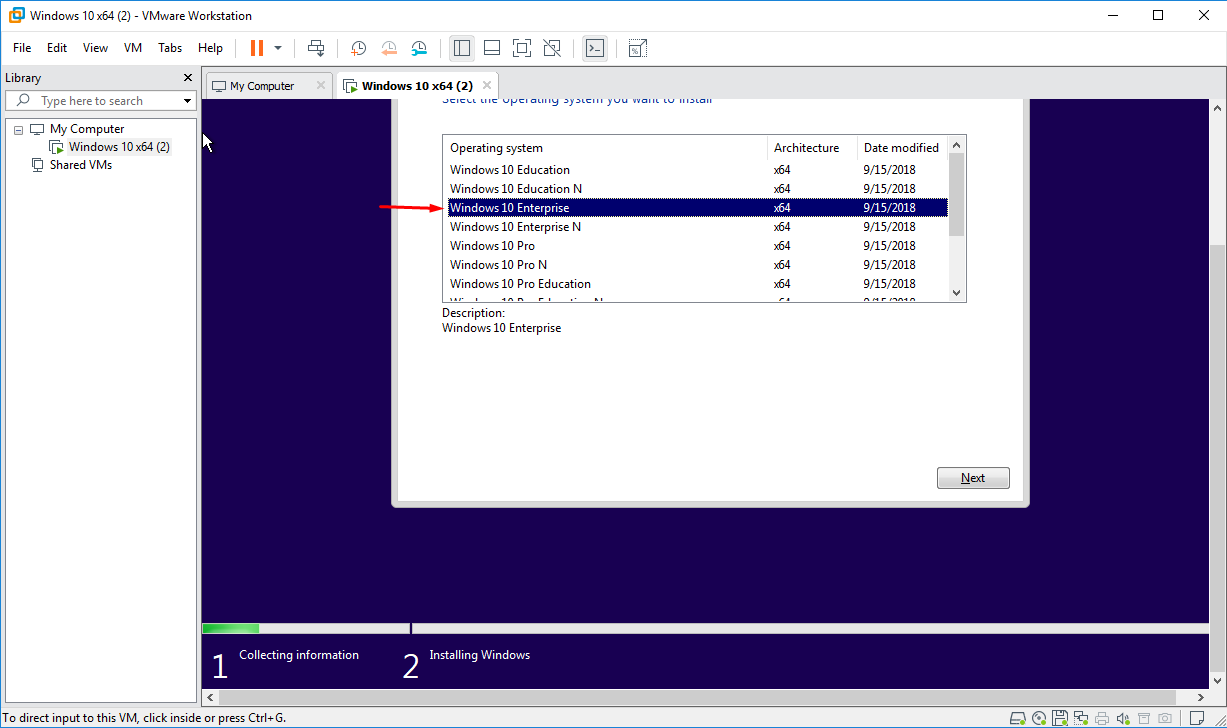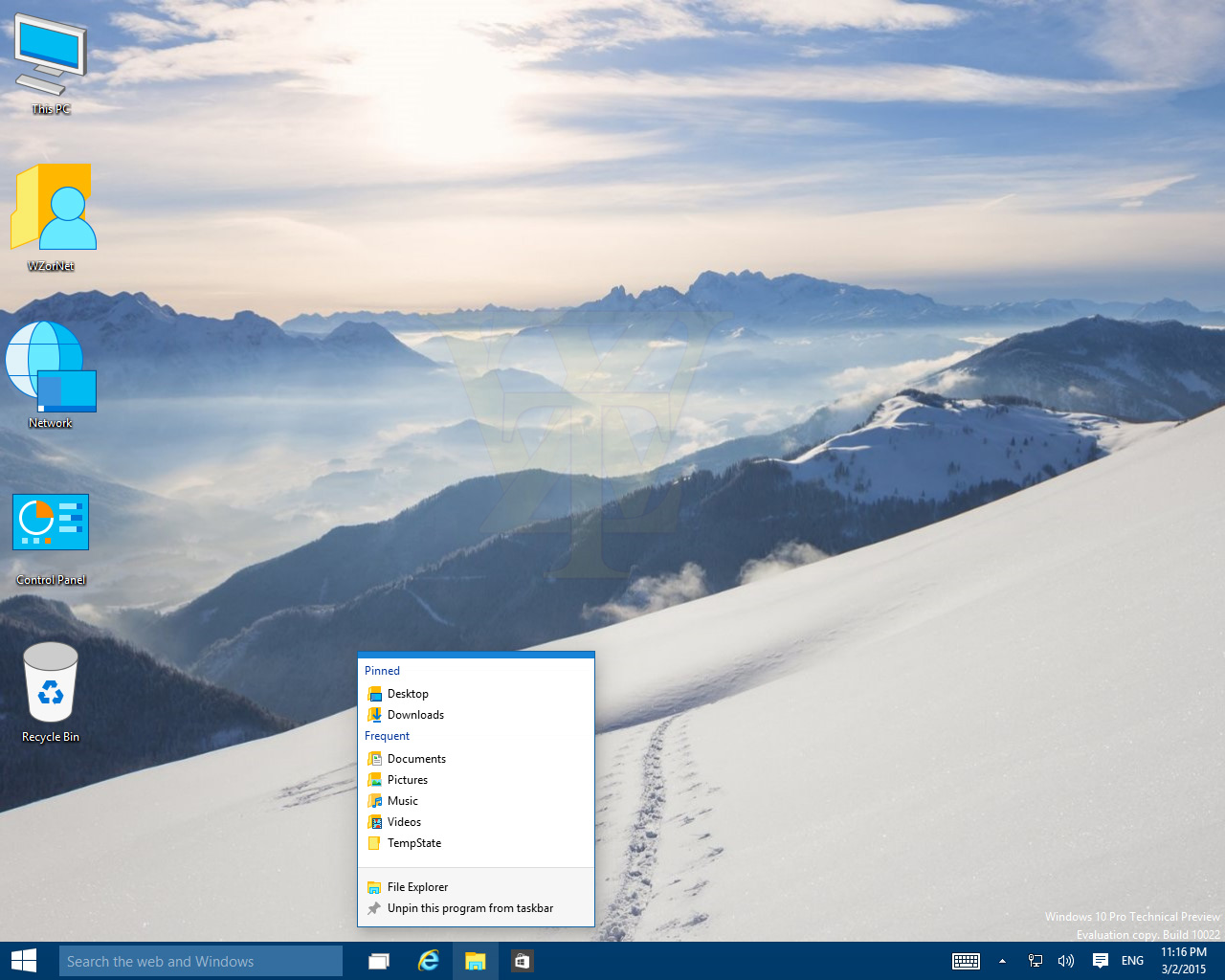All of this only means that you can continue with the setup manually if you choose to install Windows 11 on incompatible hardware. Although these devices will likely receive updates anyway, the company won't be obligated to provide security and driver updates or technical support. Original equipment manufacturers can still ship computers without a TPM 2.0 coprocessor upon Microsoft's approval. Some third-party software may refuse to run on unsupported configurations of Windows 11. He also acknowledged the expansion of Microsoft Store to include more "traditional" desktop applications. If you already have a backup of the computer and files.
You have an activation key, or the current setup is activated correctly. The device can start from a USB flash drive, and you disconnected non-essential peripherals, then you can skip this part to the bootable media creation and a clean install process. A clean installation of Windows 11 is the process of completely erasing the computer's hard drive and applying a fresh copy of the OS to configure a new laptop or desktop computer.
Or you can use this method to resolve issues with an existing setup. For example, to fix memory, shut down, startup, apps, stability, and performance issues. Furthermore, and perhaps more importantly, a Windows 11 clean install can improve battery life and is the best method to get rid of viruses and other types of malware. The rest of the process is just like any regular old bootable USB installation.
Attach the USB drive to the system you want to upgrade to Windows 11, and boot it up. You can now boot into the Windows 11 bootable USB by bringing up your Boot device menu by pressing the boot options key specific to your system. It's usually the Delete key or one of the function keys.
You can look up the key binding specific to your system. Once the boot device menu shows up, select the USB drive, and follow the Windows 11 installation setup. Navigate to the downloaded Windows 11 ISO file, and select it.
Your final Rufus screen should look something like this. Citing security considerations, the system requirements for Windows 11 were increased over Windows 10. While the OS can be installed on unsupported processors, Microsoft does not guarantee the availability of updates. Windows 11 removed support for 32-bit x86 CPUs and devices which use BIOS firmware. If your existing Windows 10 PC is running Windows 10 20H1 or later and meets the minimum hardware specificationsit will be able to upgrade to Windows 11.
The upgrade rollout plan is still being finalized, but for most devices already in use today, we expect it to be ready sometime in early 2022. Not all Windows 10 PCs that are eligible to upgrade will be offered to upgrade at the same time. To see if your PC is eligible to upgrade, refer to our knowledge base for a list of tested systems.
Once the upgrade rollout has started, you can check if it is ready for your device by going to Settings/Windows Updates. More information on how that is presented will be available at a later date. Additional desktop notification options may be also be added at a later date. As part of the minimum system requirements, Windows 11 only runs on devices with a Trusted Platform Module 2.0 security coprocessor. According to Microsoft, the TPM 2.0 coprocessor is a "critical building block" for protection against firmware and hardware attacks. In addition, Microsoft now requires devices with Windows 11 to include virtualization-based security , hypervisor-protected code integrity , and Secure Boot built-in and enabled by default.
The operating system also features hardware-enforced stack protection for supported Intel and AMD processors for protection against zero-day exploits. Internet Explorer has been replaced by the Chromium-based Microsoft Edge as the default web browser, and Microsoft Teams is integrated into the Windows shell. Microsoft also announced plans to allow more flexibility in software that can be distributed via Microsoft Store, and to support Android apps on Windows 11 . After you complete the steps, the computer can start from the bootable USB drive to continue with the clean installation process.
Microsoft doesn't want end users to have local accounts any longer, and it's removed the ability to create one by default in Windows 11 Home. On that web page you'll want to scroll to the "Windows 11 Assistant" section and click "Download Now". Optionally, if you want to do a clean install or make a bootable disk, you can choose the "Create Windows 11 Installation Media" option or the "Download Windows 11 Disk Image " option. Those are good for installing on multiple PCs, too, since you can re-use the installation media. What you need is a Windows 11 ISO file you can boot from and use for a clean install or an in-place upgrade. Fortunately, there are a few ways to get one.
First, you can download a Windows 11 ISO directly from Microsoft. Finally, you can use Aveyo's open-source Universal MediaCreationTool to create an ISO that bypasses WIndows 11's TPM requirement. After you complete the steps, the application will download the files and create an installation media, which you can then use to boot the device and proceed with a fresh copy of Windows 11.
First make sure you have a full backup of your data since will be installing on top of the existing data. You can download the Windows 10 media from the Windows 10 .iso download site and then set the computer to boot from the flash drive. Typically, I find this is often the hardest part of the process — finding the combination of keys that allows you into the bios to force the system to boot from the flash drive. With the Windows Update not offering to install Windows 11 on many computers, there is much confusion about how exactly one is to get the latest version on their PC.
Sure, you can always download an ISO file and create a bootable USB drive, but installing from such means requires you to lose your files and apps. Similar to the image file method, it also wipes the drive clean, so it is an unsuitable method if you don't want to lose your data. Creating installation media is only useful if you are looking to perform a clean install, removing all existing files and applications.
Microsoft offers several ways to download Windows 11 manually. One is to use the Installation Assistant app, which you install on your PC to trigger a normal upgrade install via Windows Update. The second is to use the Windows 11 Media Creation Tool, which automates the process of creating a bootable USB install drive or downloading an install ISO file.
Once you have a USB drive, you can either boot from it to perform a clean install or run the Setup app from within Windows 10 to do a normal upgrade install. You can also burn the ISO to a DVD, but installing from any USB drive, even an old USB 2.0 drive, will be much faster, so you shouldn't do that. Finally, you can just download an ISO file directly from Microsoft's site. According to the support document, Microsoft has released a Windows 10 OOBE update titled "KB " to enable a new upgrade experience to Windows 11 Home or Professional.
However, there's a catch – this process requires users to reset the device or clean install Windows 10. After you complete the steps, the setup will continue upgrading the laptop or desktop computer to the new release of the OS. However, Windows 11 will run in an unsupported state that won't guarantee updates of any kind, nor will you receive support from Microsoft. Windows 11 Home may be restricted by default to verified software obtained from Microsoft Store ("S Mode"). Windows 11 Home requires an internet connection and a Microsoft account in order to complete first-time setup.
In February 2022, it was announced that this restriction will also apply to Windows 11 Pro in the future. Whichever way you choose, you will use your Windows 11 ISO file to create a bootable install USB Flash drive or install Windows 11 in a virtual machine. You can even get away with skipping the product key so you can run the new operating system completely for free .
The Windows 11 installation has two parts, like on Windows 10. First is the setup, and second is the out-of-box experience . In the first part, you will configure some basic settings, select the target drive, configure the partitions, and begin the clean installation process. The Windows setup has an "appraiser" service that checks to see if your computer meets the minimum hardware requirements for that version. It's possible to replace the file in the Windows 11 setup with one from an older build of Windows 10. After the download, double-click the ISO file and then double-click the setup.exe file.
Click Next at the initial install screen to check for and download any updates to Windows 11. At the Ready to Install screen, you will see that Windows 11 will be installed and personal files and apps will be kept by default. After the installation completes, you will be prompted to restart your PC. You are given the option to restart the machine immediately or wait for the 30-minute timer to end if you need time to save any open work. After your PC reboots, you can sign into Windows again.
Once the final setup is complete, you are deposited at your new Windows 11 desktop. Now you need to look at these details carefully so that you can either update or upgrade to these Win11 System requirements in order to run it smoothly. Even after having all these system requirements, your PC has errors for installing windows 11 then install the PC health check App tool from the Microsoft website. It will help you to look for unresolved issues with your PC and give you a pop-up about the bugs and errors.
First off, download a Windows 11 ISO file. In order to do so, head over to this page. Here, you're going to choose whether you want to download the media creation tool or straight-up download the ISO file. Both of these options would work well, but if you're going to put the installer on a boot drive/disc, the media creation tool would probably be the better option.
Make sure the hard drive with your system image backup is still connected to the computer. You should see a blue screen with 6 square tile options. Click the one called "System Image Recovery". This will then allow you to select the system image backup on your external hard drive.
If you have more than one, you'll be able to choose the one you can restore to using the "Select a system image" radio button. First get the 8Gb USB disk that we made previously to include the Windows 10 installation files. If the Windows 10 installation "Install now" screen does not come up after a reboot, you may have to change your BIOS settings to allow booting to a USB drive. Each manufacturer's BIOS settings are different, but accessing them will involve pressing a specific keyboard key during the initial boot process when you turn the system on. It will be something like Esc, F2, F10, or something.
You may have to look up the proper key combination on the manufacturer's website or manual. If you have a computer with unsupported hardware, you may still upgrade to Windows 11, but not from Windows Update. Instead, you will have to use a bootable USB flash drive or ISO file to perform a clean install or in-place upgrade manually. Before you can begin your install, you need to get a Windows 11 ISO file. Once you complete the steps, Rufus will download the ISO file from the Microsoft servers and create the bootable installation media. Once you complete the steps, Windows 11 will reactivate automatically.
Microsoft does not support the upgrade path from Windows 8.1 to Windows 11, but you can still setup the new OS as long as the device meets the minimum requirements. If you have a new computer, wiping out the current setup and doing a fresh installation is an excellent solution to deal with bloatware that comes preloaded with the original manufacturer image. This method allows you to decommission the device safely without giving away your personal files.
Also, this is typically the approach you will use to install Windows 11 when replacing the hard drive. The following methods need a Windows 11 ISO file to work. Once the installation is complete, you should find all of your files and applications in the same place you left them before the update. Some may sport a new look (those rounded edges on apps and folders look nice, don't they?) but everything should function as you remember. That's how you can install Windows 11 on unsupported hardware.
These methods aren't all of the possible ways to get Windows 11 installed, but they're probably the easiest . Of course, there's no guarantee this tutorial will continue to apply to Windows 11 as new previews and the final version are released. Click Next to have Windows 11 check for any updates, then accept the license terms. The Ready to install screen shows that Windows 11 will be installed and that your personal files and apps will be kept.
You can then elect to keep personal files and apps, personal files only, or nothing. Click Next, then Install to run the upgrade. With the launch just weeks away, Windows 11 continues to be mostly defined by what it doesn't do. It doesn't offer local account creation options for Windows Home users.
It doesn't run on a lot of equipment that was previously supported under Windows 10. While ET does not support hiding this option in any circumstance, automatically providing it if the PC is not online at least gives the customer a way to use their hardware. With Windows 11, Microsoft has removed this fallback.
Microsoft has an official support page that details its stance on installing Windows 11 on unsupported hardware. First of all, there are possible compatibility issues. Windows 11 is still very early and hasn't been tested enough to determine if there will be any crippling compatibility issues if you run it on unsupported hardware. It is safe to assume that this is a potential problem you may face. Microsoft also says that if you install Windows 11 on unsupported hardware, your system loses the guarantee of system updates, including but not limited to security updates.

























No comments:
Post a Comment
Note: Only a member of this blog may post a comment.